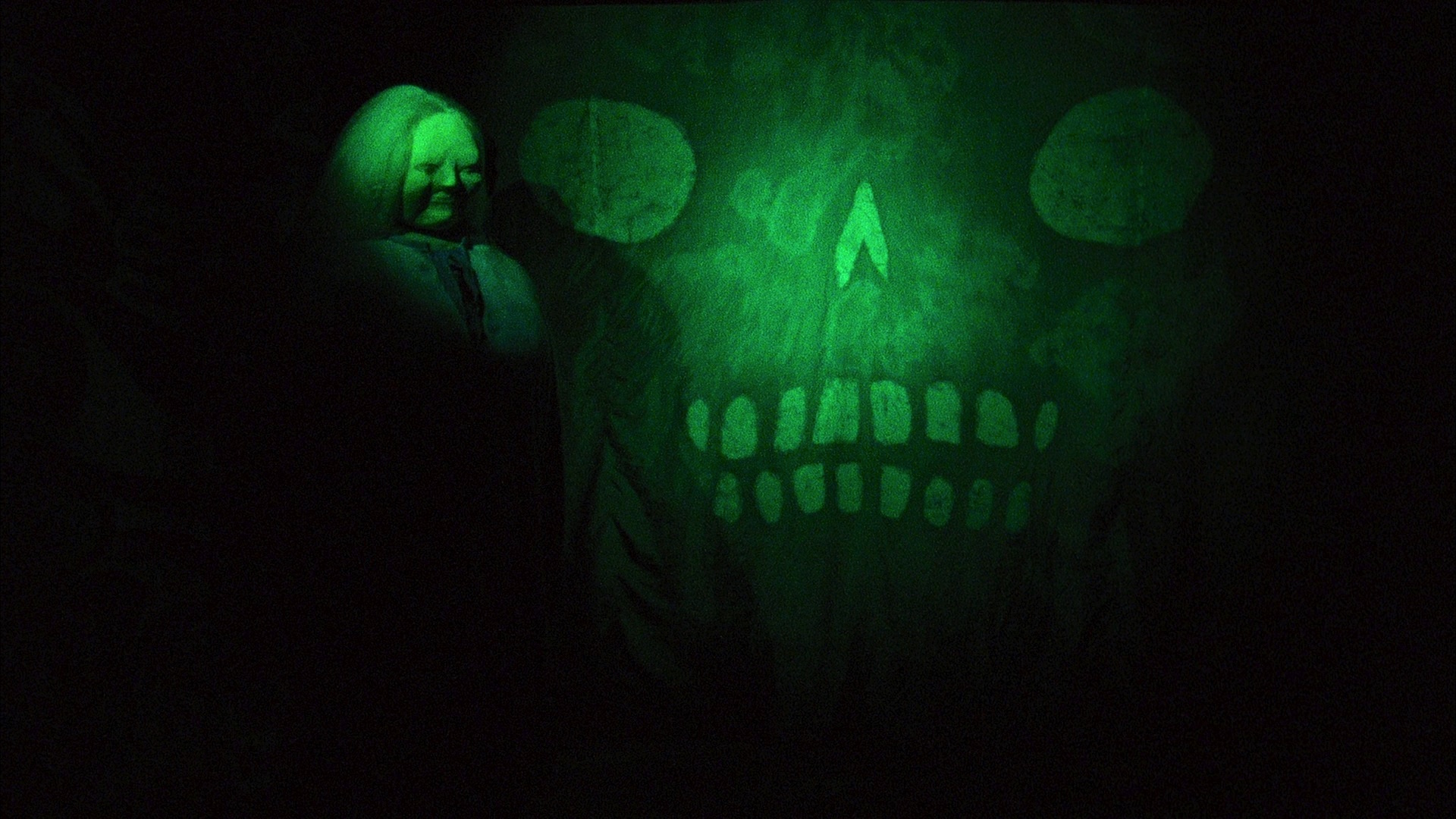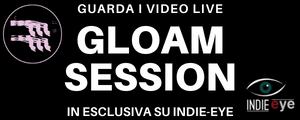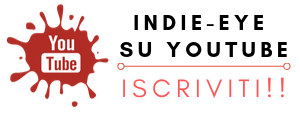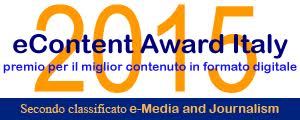(Cover Image: Jorge Drexler: 2 Segundos de Oscuridad – film by Steve Lippman )
“I’ve never thought of my work as anything other than making films, or as I like to call them, music short films. Music video is just a branding term that’s part of public and marketing vernacular”. Steve Lippman is a “rare” filmmaker, if we mean original and creative. He is first and foremost an artist; moving freely between pop traditional and experimental forms, he mixes many visual languages and styles to catch the spirit of music and the artists that make music. His ongoing career includes collaborations with musicians like David Bowie, Bette Midler, Esperanza Spalding, Laurie Anderson, Dolly Parton, Trixie Whitley, to name a few. In this comprehensive conversation, we talk with the director about his career and his approach to filmmaking.
IE: Tell me about your beginnings. How did you get started in filmmaking?
There’s a very specific memory from my childhood. I was probably only 5 or 6 years old. My godmother was sitting with me on the couch, and she put on some classical music. I can’t recall what piece it was, but I remember clearly she told me to close my eyes, and said, “tell me what you see.” I don’t remember my answer exactly. Maybe I pictured something basic like flowers or the sun, but it was the first moment I had where I imagined visuals and matched it to music. It was the first creative impulse that I can remember. This was, if not in the official sense, when I became a filmmaker.
I also grew up in a house where there were a lot of movie-musical soundtracks like “West Side Story,” “The Music Man,” and “The King & I.” I would listen to songs and imagine what the scenes looked like before I had a chance to see the actual movie.
My practical skills were learned during a brief stint at Northwestern University, and mostly from an early mentor. Jerry Haislmaier, who ran Encyclopedia Britannica Educational Films in Chicago. He was the first person to ever tell me I was talented, and nurture that. Though he died a while ago, I think of him often and the experience I gained from him.
IE: Music has played an important role in your career, but your work is closer to experimental cinema than to traditional music videos. Was this a deliberate choice?
I’ve never thought of my work as anything other than making films, or as I like to call them, music short films. Music video is just a branding term that’s part of public and marketing vernacular. My approach is first and foremost informed by the artist and the music. In some cases, it’s not experimental at all, like my work with Bette Midler. There, I didn’t want to get in the way of what she’s delivering as a singer and an actress. There’s no point in reinterpreting that kind of genius. I only wanted to serve it with lighting, framing and when to hold still or move the camera. She’s telling the story already. Likewise, for example, I wanted to highlight the purity of artists like Esperanza Spalding and k.d. lang with images where their emotive faces and body language are the focus and the canvas.
But yes, I love experimental work, and it defines a lot of my credits, but I also know that not everything warrants that treatment. I don’t want to be limited to one thing. I love capturing the immediacy and intimacy of a singer, albeit in stylish way. You can see that in the work I did with Bonnie Raitt, Rumer, and just recently, Valerie June. Bowie was the one artist I’ve worked with where I could approach it both ways.

ESPERANZA SPALDING 2 Songs: Chamber Music Society, film by Steve Lippman
IE: Your approach to filming live performances seems different than what you’d normally see on TV. For example, your work with Esperanza Spalding and your use of colors and refractions.
The work with Esperanza has a subtle experimental touch. The DP, Shane Sigler, deliberately used a damaged lens on a few takes that broke the image into triplicate, each with different primary color properties. All that was in camera. The color flares and refractions were actually shot separately as homemade tabletop effects experimenting with light passing through various glass objects. I then overlaid this into the performance image, which was shot in mostly black limbo. I think the final result is deceptively organic. It looks like it might have been done on-set, but I controlled all of it during the edit.
IE: You often use Super 8mm in your work. What draws you to it?
Super 8mm feels like memory. It also has a timeless quality. It could have been shot today, or decades ago.
IE: It seems you’re exploring the language of surrealist and avant-garde cinema by using film stocks. Do you prefer film, digital or a mix between the two?
On first instinct, my preference is film, especially Super 8, yet it’s not always possible with some recent commissioned work. It’s not really budgetary, but more about time and post-production schedule, though this may change with the 2017 opening of KodakLabNYC. Also, it’s unnerving to some clients to have to wait and see what things look like, but that perception may change with the new Kodak Super 8mm cameras which have built-in LED viewfinders and HDMI outputs for on-set viewing. Still, my shooting method is so instinctive and not always in a controlled environment, so there’s always going to be that sense of tightrope walking and leap of faith.
Gratefully, I still get recent artist-commissioned work like Trixie Whitley, Silje Nergaard and Bonnie Raitt that were shot on film with no concern.
I do like using digital for live performance settings, mainly for the ease and immediacy. There’s great advantage to capturing sustained performance energy that can be otherwise be ephemeral. Too much delay between takes can dissipate that. Still, it’s important for me not to be lulled into shooting too many digital takes. I still have a “stop” impulse that’s carried over from working with film where you only have a certain amount of stock. I once shot too much digital on a recent project. As the editor, I wanted to yell at me, the director. I prefer a low shooting ratio.
IE: A beautiful example of your Super 8mm work is “Unclouded” with Silje Nergaard. You filmed in Oslo. Water and natural ambience create an image that is closer to poetry than narrative. Can you tell us more about this piece?
Silje has been a friend for a while. I met her after writing to express how much I loved her breakthrough album “At First Light.” A few years before we did this film, I stayed at her home in Oslo for a few days during some European travels. From her balcony, she has the most extraordinary view of the lingering Nordic evening sky, and the water. I already had a mental imprint, though limited, of the ambience and palette of Oslo. Returning for the film, we explored the Oslo I hadn’t seen. Silje is a popular cultural icon in Norway, so I think we took advantage of that status and got away with a lot of racing-around guerilla filmmaking, though ultimately contemplative and dreamlike in effect. I worked with French-based DP Cecile Ravel, who does her own work in Super8mm, and she was a tremendous collaborator.
The piece was really formed in the edit. I’d originally thought it was going to include synch performance of a couple of songs and conversation, but once I saw what I shot, I decided to use a completely different song, along with fragments of others, than originally intended, and abandoned spoken word. The main song I wound up using has a folk narrative, and felt it resonated with and anchored the otherworldly quality of the images I was experiencing and creating. It was, in a sense, a New Yorker’s reaction to Oslo.
That film was also about the disorientation and helplessness of loss. Silje is a social activist, and was protesting the imminent destruction of the forest where she would go regularly for inspiration and to write. We filmed part of it there to preserve, at least, its image. For myself, I was in the process of personal grief. She was very generous to let me express myself through her music, in such an intimate way.

Silje Nergaard: Unclouded, film by Steve Lippman
IE: One of your first conceptual films was “Life on a String” with Laurie Anderson. It has a narrative structure that seems similar to the one you later realized for Carly Simon, but more experimental and synestetic. Can you tell us about working with Laurie Anderson; how did you interact with her to developed the concept?
The structure of “Life on a String” happened by accident. The original intent was to create an EPK (electronic press kit) for Laurie’s album of the same name. I went to meet with her, along with David Bither, her A&R person at Nonesuch Records. Laurie feigned ignorance – “What’s an EPK?” she asked – and when defined, she said she wasn’t interested in explaining her music. David declared, “I know. We’ll do the anti-EPK!” That set the stage for a blank canvas and to create whatever we wanted. I suggested that we only use fragments from the album, and went home and put together an audio collage taken from five different songs. It never changed from that first pass.
Working with Laurie was, at first, intimidating, not because of anything she did or said, but because of the enormity of her stature as a multi-media artist. It was my own insecurity and wanting to live up to the standard of her work. Once I relaxed into the simple notion that I was invited to do this, I just ran with it. Laurie and Nonesuch were very generous in just letting me do whatever I wanted to do, within budget.
The bulk of the film was shot and edited without Laurie being in it. She loved it as it was, and didn’t think her on-screen presence was necessary, but we convinced her otherwise. We then reconvened in a studio to shoot all the images with Laurie, including projecting the edited film onto her face and various textures. We also shot some miniature models. All this was inserted and matched back into the final cut.
She was not only phenomenal to work with, but also very generous to me. When the film debuted at high-profile festivals, the first being Berlin, she stepped aside and let me represent the piece. While we never discussed it directly, I think it was her way of letting me shine, knowing that if she were there, people would likely assume that she directed and conceived the film, given her legacy.
“Life On A String” validated a form that I find exciting to this day. When we worked the festival circuit, I’d call it a “music short film” and that term has stuck. I used a similar structure for “Fan Dance” with Sam Phillips, “Tiny Voices” with Joe Henry, and “2 Segundos de Oscuridad” with Jorge Drexler. “Tiny Voices,” along with “Reality” with Bowie, was the first of these films where I used spoken word. The words were deconstructed, and used rhythmically and evocatively. Music emerges organically out of the dialogue.
“Into White” with Carly Simon had a midsummer’s daydream into night structure, focusing on 4 complete songs, and was a response to her open-hearted spirit and the mystical surroundings of her Martha’s Vineyard estate, where we filmed. The original intention was to weave spoken word into the film, yet I found the use of natural discreet ambient effects and the music was enough. I was seduced by the Alice Through the Looking Glass quality of the songs and didn’t want to break the spell for the viewer by fragmenting. The whole film was essentially improvised and discovered over the course of 2 days spent with her, and again, the result of working with a very generous artist.

Laurie Anderson – Life on a String, film by Steve Lippman
IE: For “Life on a String” you collaborated with director of photography Teodoro Maniaci. You worked with him also on “Reality” with David Bowie. Can you tell us something about this collaboration?
I was introduced to Teodoro Maniaci through some mutual colleagues when I was commissioned to do a music short film for a classical artist, the pianist Fazil Say. I knew Teo’s work on the film “Clean, Shaven” and I was excited to work with a DP who didn’t come from the commercial world.
Teo and I fell immediately into a shorthand communication, and I could reference examples or throw out ideas without eliciting a puzzled look. He also fully enjoys breaking the rules, mixed with innate professionalism. We’ve done a lot of diverse work together, including Bowie, Bette Midler, k.d. lang, Rumer and most recently Trixie Whitley. He’s also a fearless traveller, which helped greatly when we did the short documentary about Youssou N’Dour in Senegal.
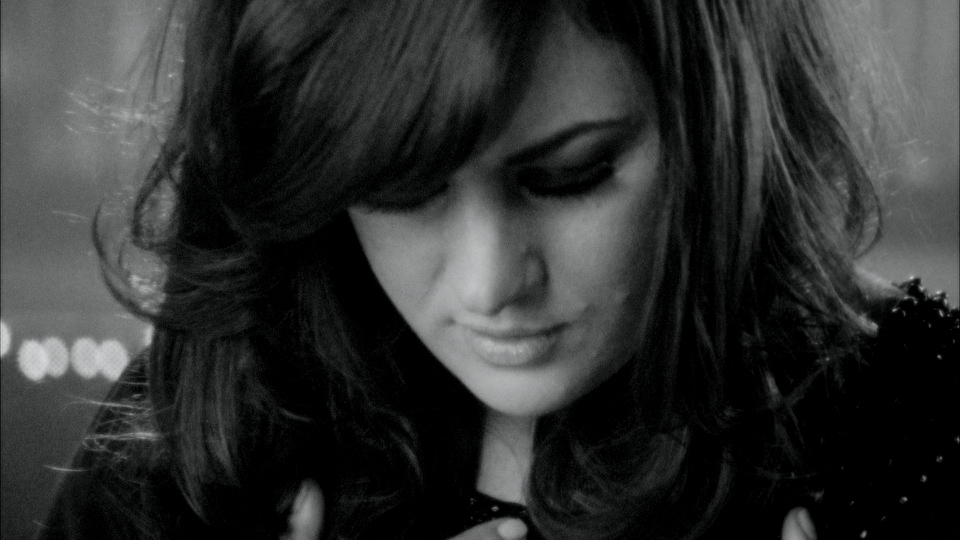
Rumer: Am i Forgiven? film by Steve Lippman
IE: In some of your work, like “Nuevo” with Kronos Quartet, “2 Segundos de Oscuridad” with Jorge Drexler, “Fan Dance” with Sam Phillips, and some excerpts from “Reality” and “Life on a String” it seems you’ve developed an idea of rhythm and music through images recalling the work of Germaine Dulac or Jean Epstein. Can you talk to us about these works?
It’s totally instinctive and without any conscious influence. With rare exception, I don’t storyboard, and certainly never for the experimental pieces. I have an idea going in, but then I’m just reacting to unexpected things that shape the process and the film. For instance, with the Jorge Drexler piece, other than the close-up portraiture, the rest was completely improvised. It was my first time in Madrid, as it was for my DP and producer who I brought with me from New York, so there was a sense of discovery at every turn. The Kronos piece, shot on Super 8mm, was elevated in the edit by shots taken from home movies that a friend of mine happened to have from her Dad’s regular visits to Mexico in the 60s. It was just by chance that I happened upon them around the time of shooting “Nuevo.” She gave me permission to use the footage and it elevated the piece. On “Fan Dance,” I experimented with a set of 35mm “trick” lens from the 1950s that were retrofitted for use on the Super 8mm camera, creating unexpected internal patterns and rhythms.
I mostly edit my own work. For me, it’s an extension of directing. I also, for the most part, color correct the images myself. I react rhythmically, though not on the obvious musical beat; more on the undercurrent. It’s my odd, and only, musical talent expressed through film. Sometimes I will edit and turn off the sound once I have the foundation in place, and just let the palette and rhythm of the images “sing” to me.
The films where I use a layering technique, I’ll usually do two different linear cuts, and then print one on top of the other and discover new textures and rhythms within the frame, then just keeping those I love. This informed all the examples you mention, plus the Trixie Whitley and Silje Nergaard pieces, and part of the Carly Simon.
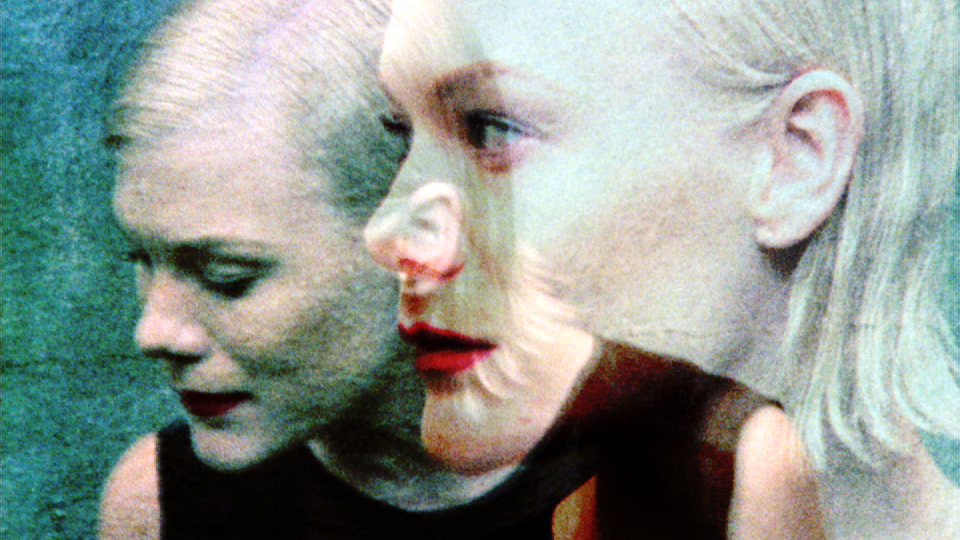
Trixie Whitley – Never Enough, film by Steve Lippman
IE: The way you film performances is very interesting. It seems that a recurring image is the performer’s face used as a screen or a canvas , lit within a vignette, similar to early Jazz shorts, or in early performances filmed for the Leon Schlesinger “Spooney Melodies” series. You really highlight the allure of a performer in your work. I’m thinking about k.d. lang, Jane Monheit, David Bowie, Dolly Parton. They’re always enveloped in light. Why this magic and unreal “distance”?
I love movie musicals, especially of the studio era, and the musical shorts of the 30s and 40s. There are these otherworldly close-ups of musical performers like Judy Garland or Lena Horne, and it’s mesmerizing. Or later, Streisand singing “My Man” at the end of “Funny Girl” (1968) in a black dress against black limbo where your focus is on her face and expressive hands. The palette is broken up only by emerging color stage lights when the camera dollies around. It’s so deceptively simple, yet visceral and intense. Today, it’s hard to imagine the impact of sitting in a huge movie palace and seeing something like that, or a powerful close-up, so huge. I still imagine the potency of that scale, even when watching films at home. Though my formative movie-going experiences and sense memories are later, that of the films of the 70s, it was still pre-home video, and I guess I still think in large screen terms and the impact of a close-up. And I love Bergman. So maybe it all gets mixed together in the impulses.
Certainly when working with people like Bowie, or say Dolly Parton, there’s a built-in magnetism you have to rise to meet creatively. Jane Monheit could channel the spirit of the MGM musical in her performance. I wanted to treat these performers like old-school movie stars. It makes no sense to strip that down, or hide in the shadows.
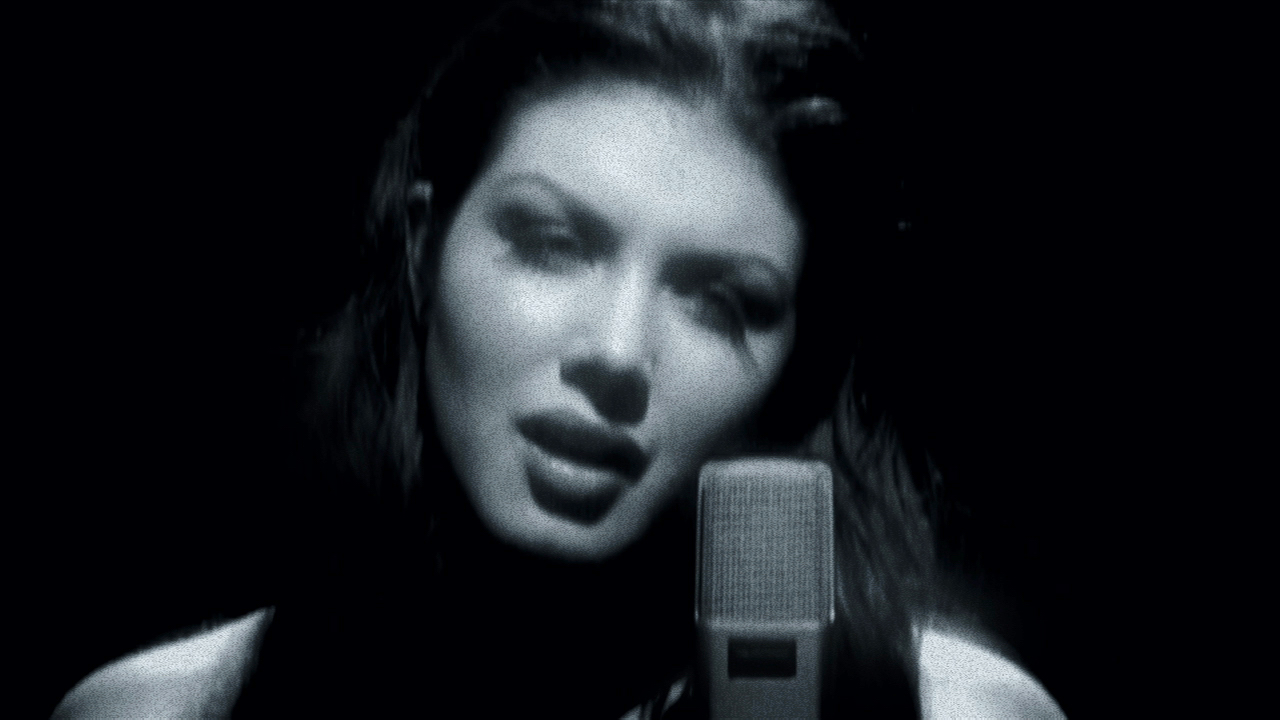
Jane Monheit: Some Other Time, film by Steve Lippman
IE: For Bette Midler’s “The Folks Who Live on the Hill” you selected some of Peggy Lee’s family home movies. Can you tell us how this came about?
This was part of a longer piece I did for her album “Bette Midler Sings The Peggy Lee Songbook.” Before I was brought on the project, the label had already contacted the estate run by Peggy Lee’s granddaughter Holly Foster Wells, and she offered them access to home movies that had never been seen before. I think the pre-disposed idea was they were going to be interspersed throughout the piece. We shot interviews with Bette, Holly and her mother (and Peggy Lee’s daughter) Nikki Lee Foster, and four in-studio Bette Midler performances at Capitol Records Studio A, where Peggy Lee had originally recorded. When I was putting the program together, I had already heard the entire yet-to-be released album. I couldn’t get Bette’s recording of “Folks Who Live on the Hill” out of my mind. We didn’t have time to shoot her performing it on-camera, so I just started playing around with the home movies against the song, and the next thing I know there was this beautiful self-contained experience. The footage was incredible, like stepping through a time portal. I was so privileged to have been entrusted with those personal family images.
IE: Memory and reveries seem like important issues in your work.
Yes. And it’s about relating the past to the present.
IE: In my opinion, one of your best works is for Rhys Chatham’s “A Crimson Grail.” As we read in the notes you’ve published, the visual goal was an exploration of the tactile qualities of Super 8mm film. Can you elaborate on this?
It was more about creating an elegy for Kodachrome Super 8mm through opportunity. Nonesuch Records needed a promo for a recording of RhysChatham’s “A Crimson Grail” and again were open to a blank canvas approach. This was just around the time, if not to the day, that it was announced that the one lab in the US that developed Kodachrome had set a stop date for operations. I bought a few expired unexposed rolls of Kodachrome off EBay, having done this previously for a portion of the Jorge Drexler film. The results were completely unexpected and exciting. Still, there’s too much risk shooting solely with expired film – sometimes you just get nothing out of it – so for the Chatham piece, I added a few rolls of Color and B&W Ektachrome as back-up. The budget was super-minimal, so I limited myself to 9 rolls total as part of the challenge and experiment. I simply shot light textures in my home studio, similar to what I did with the light effects in the Esperanza Spalding and Valerie June pieces. Again, musically I collaged sections of the longer piece to create the audio bed. The rest was playing around with film textures and internal visual rhythms during the edit. I used various digital techniques to shift color properties and density while retaining an organic feel. I wanted the chemical process of film to filter through the digital world.
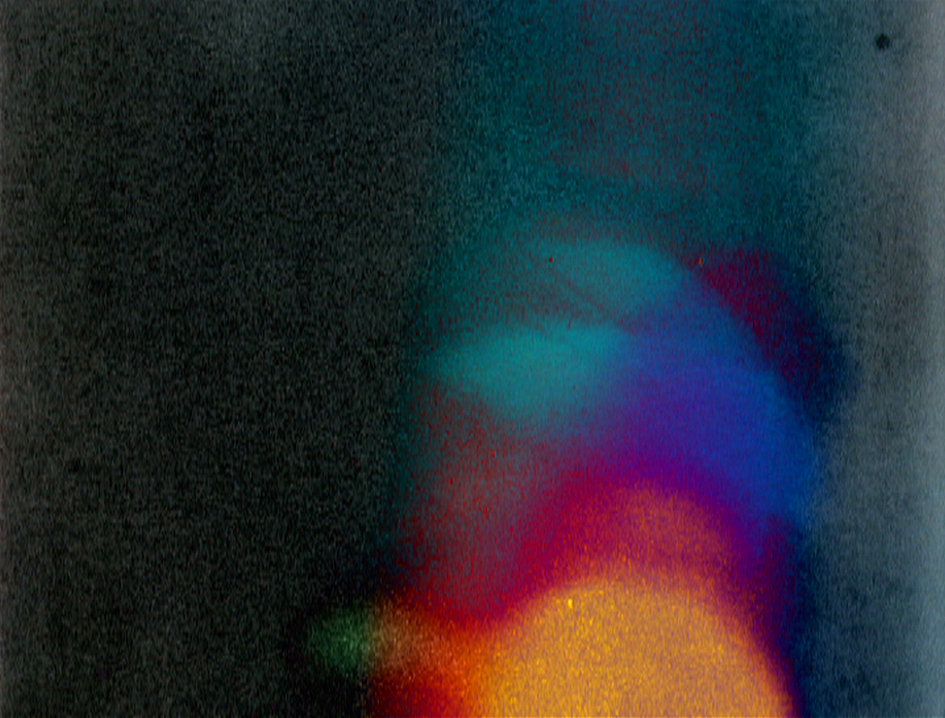
Rhys Chatham: A Crimson Grail, film by Steve Lippman
IE: Errors and organic defects of film seem important to your work. Does shooting on digital offer the same to you?
I love the mistakes. Even when I try to occasionally create “mistakes,” it’s always the errors in creating them that work best for me.
Digital doesn’t have the same effect, and I certainly miss the natural beauty of film accidents and roll-outs. With digital, I find and embrace different mistakes. Recently, I bought a set of attachable macro-lenses for my IPad and was fumbling around with them and found by using the lenses the “wrong” way, I could create beautiful impressionistic textures. I was going to use this technique for a concert video projection commission that unfortunately got cancelled, but not before I’d already created a bunch of textures for it and saw the possibilities. I used this method recently in select shots in the Valerie June video
Valerie June – Shakedown, official Video
IE: With “Mariners & Musicians” with Rosanne Cash, you created a narrative mosaic around a self-reflective portrait, using many different techniques. In a way, the film is an interesting hybrid form between documentary and an epistolary novel. Can you talk to us about this particular project and why you’ve choose different techniques and tools (8mm, 16mm, animation) to tell Rosanne Cash’s story?
Like a lot of my projects, it began with me reaching out to the artist, in this case Rosanne Cash, to simply say I admire their work and this is what I do and I’d love to work with you.
Rosanne was receptive, and it then evolved into the planning for her then-forthcoming album “Black Cadillac” which was her response to the recent death of her father and step-mother. Then, just after completing the album, she also lost her mom. There was a delay in the release of the album to allow her space to grieve and adding one song. It was an uncommonly long gestation period; life kept guiding and shaping the piece before it was even shot.
I’ll say this; while much was made at the time about grief and loss, the impetus for the film wasn’t that. No matter when I might have found Rosanne, there would have been something compelling and resonant. I just happened upon her at this particular time.
Mosaic portrait is, if I had to admit, my favorite form, though the opportunities are increasingly rare. I did it recently, to a degree, with a little-seen portrait of Rumer for her album “Into Colour,” but the Rosanne film doesn’t have the documentary making-of ambience that informs the Rumer piece, though it does share the same intimacy and candor.
“Mariners” is its own organic experience. Everything was new and in service of the film, with the exception of the songs which came from the album “Black Cadillac.” Still, I used them in a new way, and wasn’t even sure which ones I was going to include until I started the edit. It was really her conversation that guided me. Only her recitation at the top of the film, shot in sustained close-up, and her impromptu acapella performance of “The Good Intent” in the lighthouse were pre-determined to make the final cut.
I’m not sure what inspired me to use the varying formats, other than I did the same successfully on the Bowie film, and I was probably looking to challenge myself again. The stop-motion animation was realized by the artists Louviere + Vanessa. It was created with miniatures using a Holga 35mm still camera. That sequence, representing a ship wreck from 1839, called out for something completely different from the observational and poetic reality of the rest of the film. I saw some of their work, and their sensibility was exactly what I wanted for that moment. They worked with me again on the “silent movie” title cards in the Dolly Parton “Better Get To Livin’” music film.
For me, the mosaic structure mirrors the feel of memory and how I recall the past or even work my way through the present. For example, if you’re talking to someone with great recall for detail and stories, there’s still a moment when they’ll say “Oh yes, I forgot to add this one important thing.” There’s a core idea, let’s say recounting a pivotal event, or even a dream, but in the telling, the details and chronology are usually fragmented to some extent. So I embrace that in the creative process and end result. I also find unexpected associations in the juxtaposition of images, colors, and textures that tie things together.
In “Mariners,” for instance, we were filming textures and details in her parents’ empty house in Tennessee. A couple of weeks later, we convened to film the conversation in Rosanne’s New York home. She showed us a piece of cloth that she’d recently found at a Paris flea market. It was just something she happened upon and liked. We shot a still life of the pattern, among other details. When I started sorting through footage for the edit, I noticed that the pattern on the cloth matched a pattern of wallpaper from her parents’ bedroom. With this random act of Rosanne purchasing the cloth, the past and present and various lives join together. Who owned that cloth to begin with? How did it wind up in that Paris flea market on the exact day that Rosanne Cash would buy it, and bring it back to her home only to have me see it and decide it was something I wanted to film? And that it would match the wallpaper her parents had bought decades earlier? Rosanne asks similar questions on-camera about an old postcard she found in the same flea market, but I was the one who found the connections with the fabric. I’m excited by the questions more than answers. There’s more power there.
As in “Mariners,” I’m always conducting the filmed conversations – sometimes you can hear me subtly in the mix reacting with a non-verbal “hmm” – and my brain is simultaneously logging speech patterns, phrases, words and reactions. I’m sensing themes emerge in the moment. It’s an emotional radar that guides me. I’m not manipulating anything to make the subject say something they didn’t want to say or mean, even when it feels non-linear in the edit. I’m still honoring the truth of the subject, or the persona they’re portraying, as in the case of Joe Henry or David Bowie. These portraits are moments of a life, recalling parts of life, even if life imagined. Rosanne called “Mariners” a cinematic tone poem.
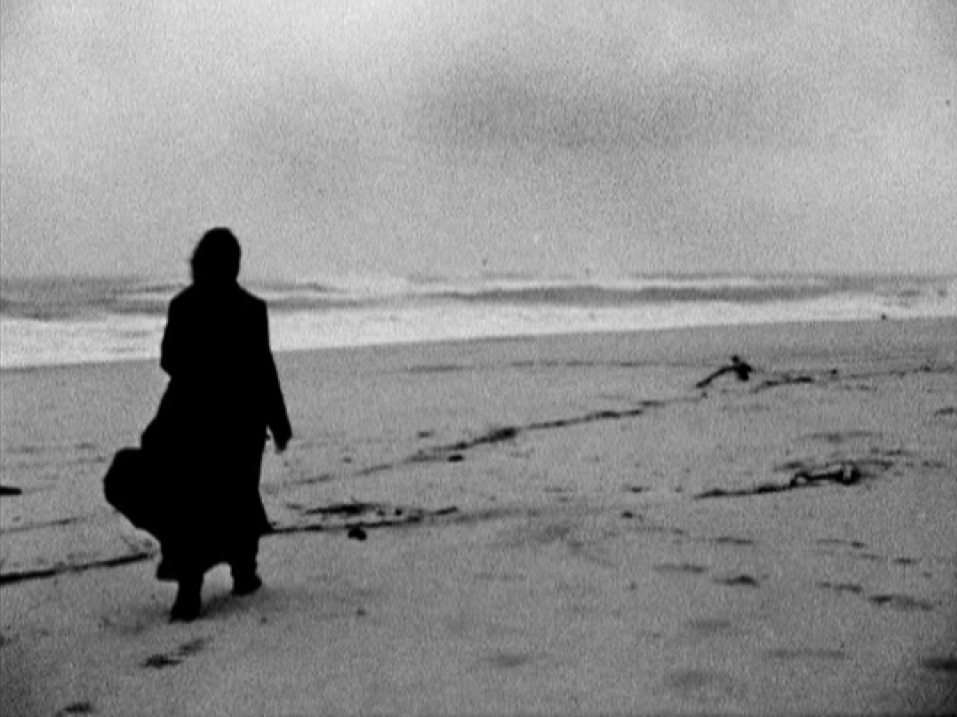
Rosanne Cash: Mariners & Musicians, film by Steve Lippman
IE: Your films, in my opinion, also feel like painting. The use of colors and refractions recall David Hockney. Is there a particular inspiration that informs your work?
Here’s the thing about influence and inspiration; what gets me going is experiencing work that excites me on some primal and intellectual level. Sure, there were beginning steps where I was consciously influenced, but that was because I wasn’t as confident. Now, I feel immune to deliberate homage. You can say my work reminds you of this or that, and it’s usually flattering, but I’m not thinking in that way. I take the influence and use it for something new.
I watch films and listen to music all the time. And I love observing people in everyday life, which is abundant in New York City. I see art and photography exhibits less than I’d like, and read fiction less as time goes on, though I love reading about directors, musicians or actors and their lives and process. But it’s discovering or revisiting films and music that really does it for me. This past year or so, I saw Agnes Varda’s “Uncle Yanco,” “Lions Love” and her other California films. They are revelatory. And her “Jane B. for Agnes V.” which I thought was one of the greatest portrait films I’d ever seen. Les Blank’s “A Poem is a Naked Person” with Leon Russell is glorious. Seeing these films for the first time, at this point in my life, I can’t imagine appreciating them more. I’m also fortunate that I’m in a long-term relationship with someone who is also creative and who gets equally intense about film and music, and our time watching films together is sacred. For instance, we’ve recently been watching Robert Aldrich films and find them thrilling with their audacity and crude machismo, yet they’re far away from anything I do. It’s the kick of pleasure, of being moved by something, that makes me think of things I want to create.
IE: What do you like and what don’t you like about the contemporary music video industry?
I dislike how lack of skill has resulted in its own precious genre. It’s encouraged mostly because someone can do it really cheap, but not necessarily well. Standards are lowered in the process.
I guess the only other thing I dislike is being competitive with others. Being self-managed, I rarely have it in me, except when the opportunity to pitch an idea is offered. Then I really want it above all. But I rarely know who else is being considered in those situations. If anything, I’m being competitive with myself in order to grow and hold up a standard. The only time I wish I was more in the loop is when I hear a song like Solange’s “Cranes in the Sky” and it sets my mind dreaming. Not that what they did wasn’t beautiful, but it’s something I wish I could have interpreted.
What I love is that we’re no longer bound to fitting a time standard or broadcast format. Directors and musicians can explore different lengths, canvases and exhibition platforms. There was a time, especially in the early-mid 2000s, when there was a lot of “bonus” content created for deluxe CD packages, and that encouraged a similar boom in possibilities and creativity. That was the reason the Bowie film got made.
IE: Can you tell us about future goals and projects?
I’m always excited to work with musicians on new film/visual work. I’ve been really fortunate to have directed a lot of my heroes, but there are just as many I’ve yet to collaborate with. There is so much to gain from people with experience who are still creating and pushing towards something new, no matter the genre. That taps into my fascination with the past informing the present. And of course, I’m totally excited by new generation talent. I loved working with Esperanza, Rumer, Trixie Whitley, and Valerie June.
I’m very proud of a piece I completed a couple of years ago, “Behind the Lid.” It’s a feature-film version of an avant-garde theater work created by Basil Twist and the late Lee Nagrin. We shot it on 16mm film, and premiered at BAM (Brooklyn Academy of Music.) I tapped into the same instincts and skills that I use with music projects to cinematically translate this experimental theater experience. It’s an elegy and memoir from Lee as staged and imagined by Basil. The live piece was a site-specific fantasia of experiential theater, puppetry, ambient soundscapes, music, and light and I think I succeeded in moving that into the film experience. I would love to do more work like it, though financing this kind of film is an extreme challenge.
I’d like to do original concert and theater projection content, and create it from the ground up. My work with Rosanne, Bowie, and Dolly Parton was all prominently adapted and featured in their respective world tours, but only in afterthought.
I’m looking to broaden the scope of what I already do with music and portraits into feature-length. I’ve been developing on and off for the past few years “Stay All Night” about the legendary Judy Garland Carnegie Hall of 1961 as told by audience members who were there. This visceral event only exists on the landmark album, which remains so influential, and in the memories of these witnesses. It’s not only about the experience of the concert, but about the witness’ lives, and New York, then and now. Another mosaic.
I’m also developing a few other music-related documentary portrait and narrative features, but I can’t really talk about them just yet, other than I’m very excited by their potential.
Looking back, as this interview has required me to do, I see that a lot of my work arrived as surprise opportunity. I remain open to the unexpected.
